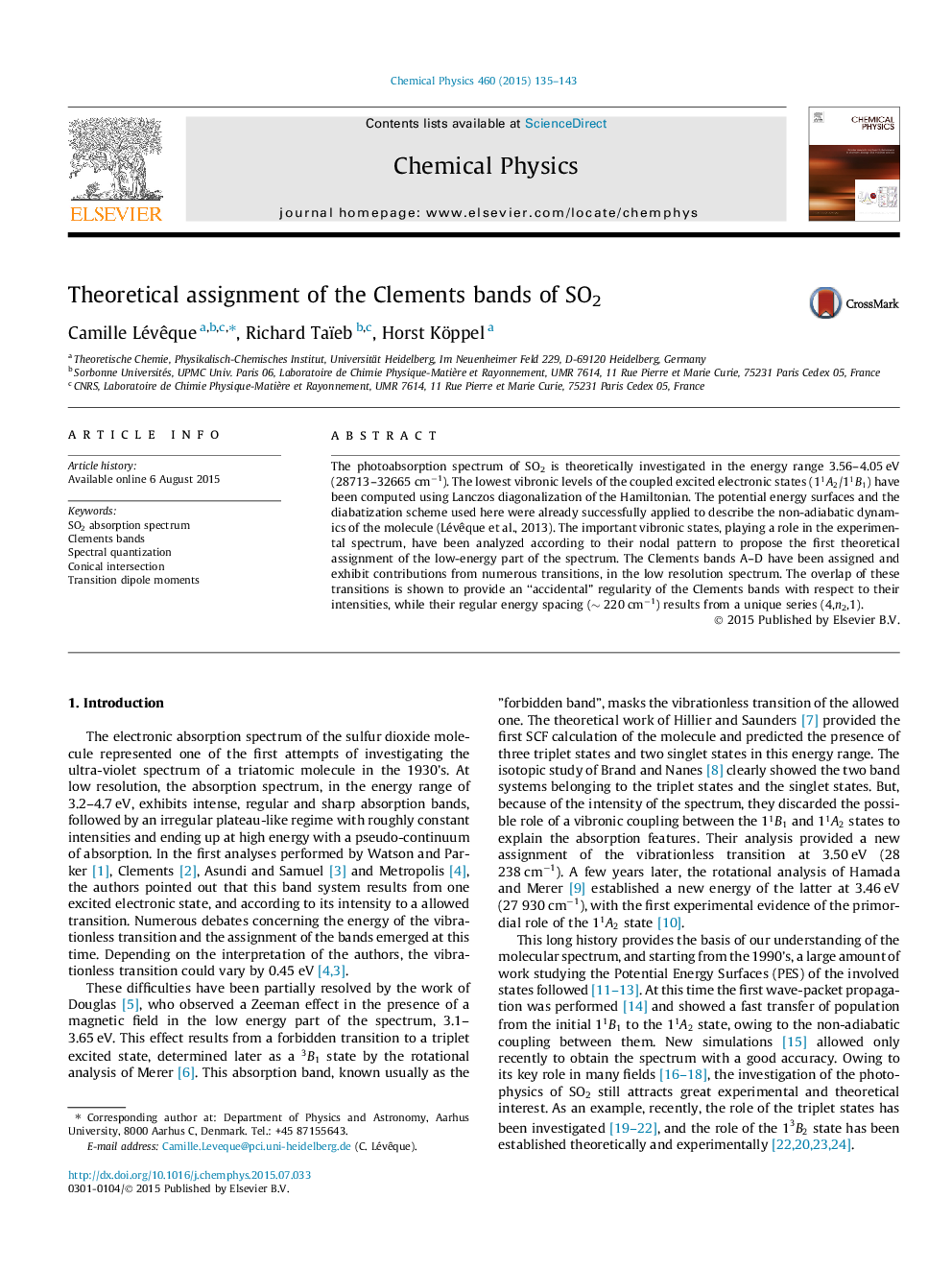| Article ID | Journal | Published Year | Pages | File Type |
|---|---|---|---|---|
| 5373182 | Chemical Physics | 2015 | 9 Pages |
â¢Theoretical assignment of the low-energy part of the absorption spectrum of SO2.â¢Lanczos diagonalization of the molecular vibrational Hamiltonian.â¢Comparison with the quasi-resonant states from time-dependent calculations.â¢Study of the non-Condon effects through the coordinate dependence of the transition dipole.
The photoabsorption spectrum of SO2 is theoretically investigated in the energy range 3.56-4.05 eV (28713-32665 cmâ1). The lowest vibronic levels of the coupled excited electronic states (11A2/11B1) have been computed using Lanczos diagonalization of the Hamiltonian. The potential energy surfaces and the diabatization scheme used here were already successfully applied to describe the non-adiabatic dynamics of the molecule (Lévêque et al., 2013). The important vibronic states, playing a role in the experimental spectrum, have been analyzed according to their nodal pattern to propose the first theoretical assignment of the low-energy part of the spectrum. The Clements bands A-D have been assigned and exhibit contributions from numerous transitions, in the low resolution spectrum. The overlap of these transitions is shown to provide an “accidental” regularity of the Clements bands with respect to their intensities, while their regular energy spacing (â¼220 cmâ1) results from a unique series (4,n2,1).
Graphical abstractDownload full-size image
